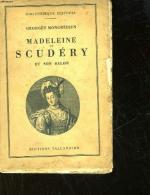|
This section contains 4,173 words (approx. 14 pages at 300 words per page) |

|
SOURCE: “Lovers, Salon, and State: La Carte de Tendre and the Mapping of Socio-Political Relations,” in Dalhousie French Studies, Vol. 36, Fall 1996, pp. 15-22.
In the following essay, Duggan argues that the social model Scudéry put forth in La Carte de Tendre applied not only to romantic interactions, but also to political concerns. Focusing on the structure of the French salons, Duggan suggests that Scudéry and other salonniers created a kind of utopian society in which the women were free to re-create themselves without regard to the limitations of either gender stereotypes or socio-economic status.
The Carte de Tendre remains as familiar to students and scholars of French literature as its accompanying Gazette de Tendre, a document discovered in the mid-nineteenth century by Émile Colombey among the manuscripts of Valentin Conrart, does not. Those who have considered the Carte to be no more than Madelaine de Scud...
|
This section contains 4,173 words (approx. 14 pages at 300 words per page) |

|


